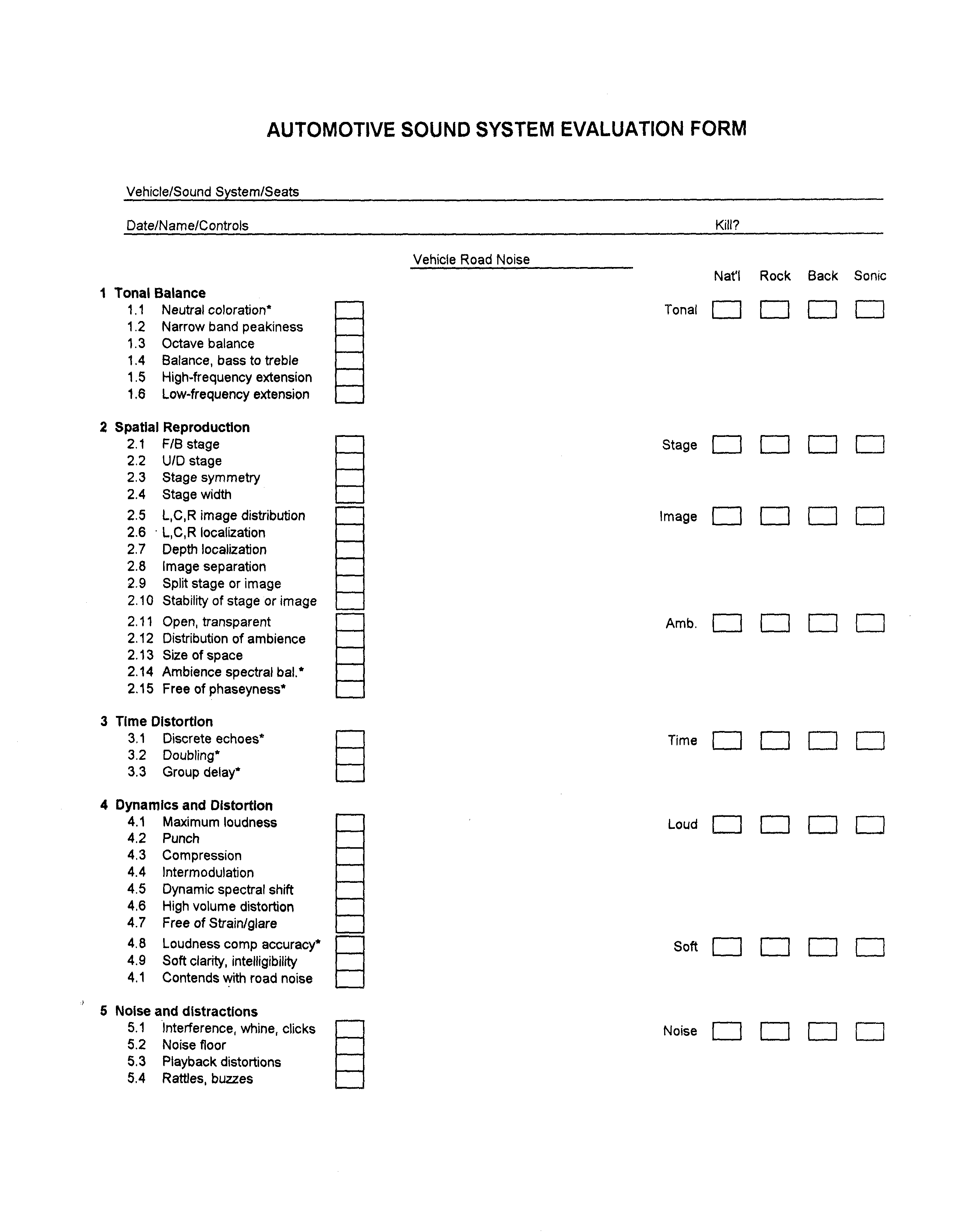(right click on form and then click Save Image As)
(use your graphics program to print "fit to page")
Scale is 1 to 5.
1 is the worst car audio system you have heard.
5 is the finest home system possible.
Weightings will be added at the meeting.


SMWTMS Test Form Becomes AES Standard -by David CarlstromThe first SMWTMS Autosound Contest was in July 1984. Since the club had established the ABX method of consistent and reliable listening tests, we all wanted to compare car audio systems with as much precision. The difficulty is that a car audio system is not only a speaker and an amplifier to compare, but an acoustic environment as well. There being no practical way to instantly switch listeners from one car to another, David Clark stabbed at a solution that helps to focus the listner on separate aspects of sound quality. For the second SMWTMS Autosound Contest in 1985, David designed a form that lists the important aspects and asks for a rating of each on a scale of one to five. Over the following years, David has refined this form and the scores it generates to the point that it has been published as an Audio Engineering Society Standard, AES 20. |
SMWTMS Subjective Evaluation Form (in the style of AES 20) |
|
| Control Settings for Otimum (O'Clock or Percent)______________________ | |
| Instructions: Rate each factor between extremes of "0" being the worst factory car sound system and "100" being the best cost no object home sound system. | |
1. Spectral Uniformity
|
|____________| 0 100 |
2. Spatial Rendition
|
|____________| 0 100 |
3. Definition or Clarity
|
|____________| 0 100 |
4. Dynamics and Distortion
|
|____________| 0 100 |
5. Noise and Distraction
|
|____________| 0 100 |
| Comment: How do you like it overall?________________________________________ ____________________________________________________________________________ | |
| If unacceptable, what were kill factors?________________________________________ ____________________________________________________________________________ | |
| Revised 9/27/98 David Carlstrom | |
Send e-mail to SMWTMS: djcarlst@provide.net